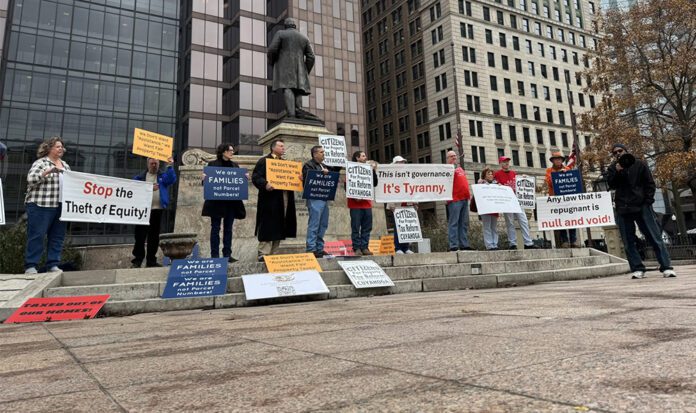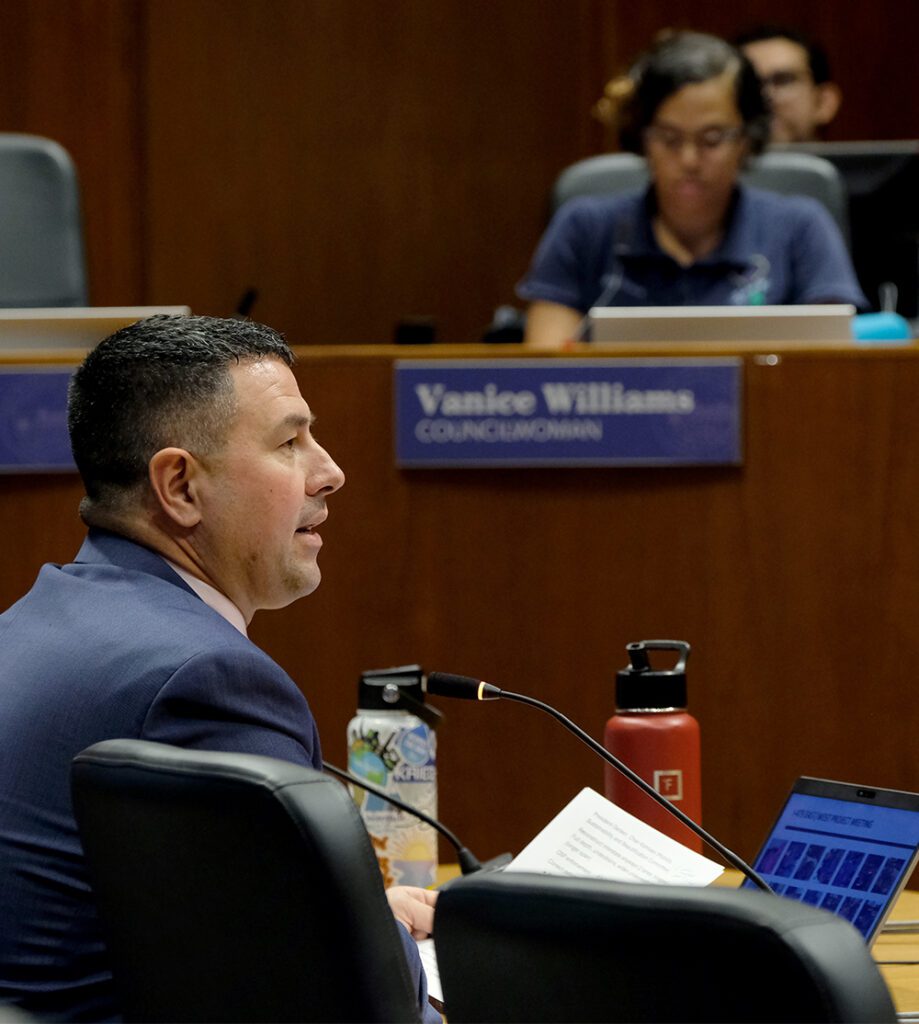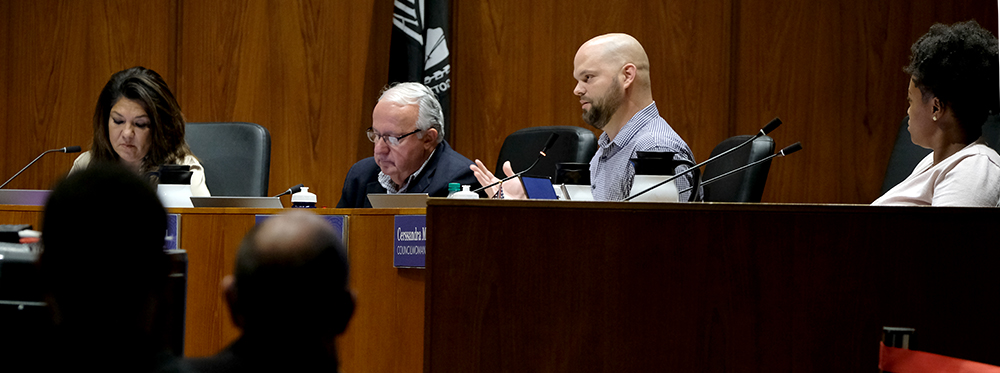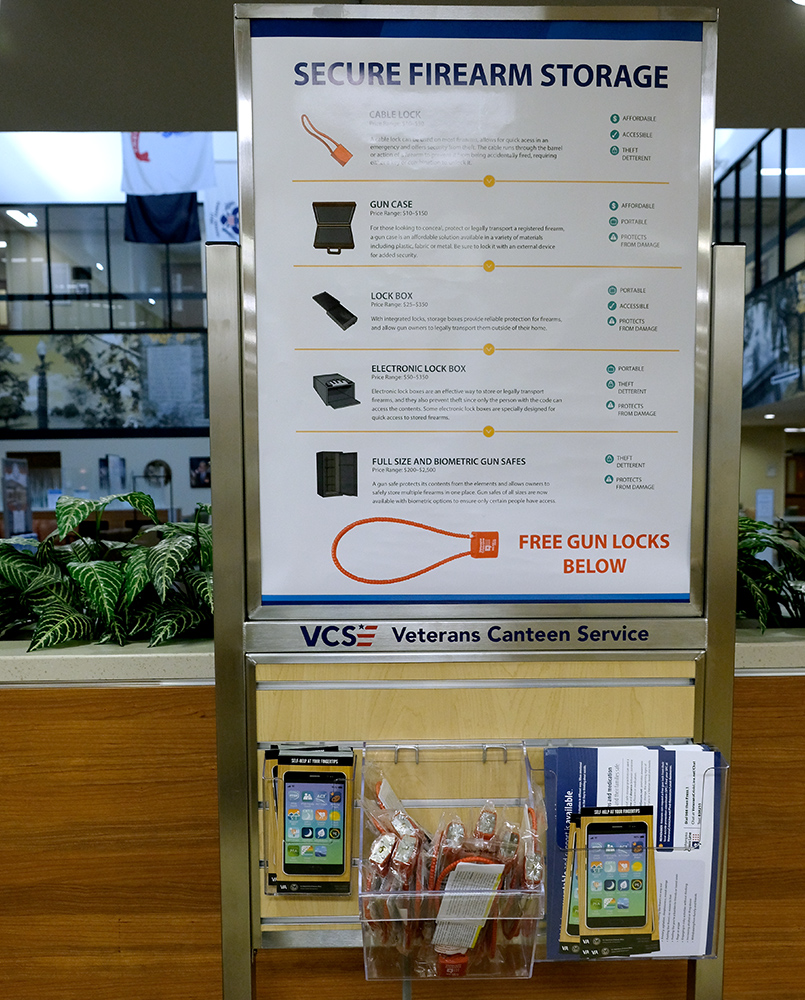Wild turkeys abound


The big birds make comeback after nearly disappearing in 1904
It has been almost 25 years since the first wild turkeys were reintroduced to Lucas County as part of an ongoing statewide effort to bring back a healthy population of the big birds.
The Ohio Division of Wildlife was responsible for the reintroduction, which started in the 1950s in southern Ohio. The program was so successful that it extended gradually to other Ohio regions. It started here in 2000 with the Division releasing a handful of adult birds in Oak Openings Preserve Metropark.
Those birds have since extended their range and have become well-established in a number of Metroparks Toledo, including Swan Creek Preserve, Brookwood, Wildwood Preserve and Oak Openings Preserve. It’s not uncommon in the winter months to see flocks of a dozen or more birds, occasionally many more.
It took time and dedication, but their comeback is a happy milestone in a story that hit its lowest time in 1904, when it was declared that the wild turkey had disappeared from Ohio.
Wild turkeys can now be found in all 88 Ohio counties. The statewide wild turkey population is estimated to be over 150,000 birds.
Statehouse: Property tax revaluations


Tax revaluations spur grassroots backlash
This story was originally published by Signal Statewide. Sign up for their free newsletters at SignalOhio.org/StateSignals.
By Andrew Tobias | Signal Statehouse

OHIO – Gerald Bruce may have lost the first battle in his effort to radically overhaul Ohio’s system of assessing and collecting property taxes.
But the 64-year-old Groveport maintenance worker isn’t giving up his crusade – the first step of which involves trying to personally get 1,000 voters to sign his petition for a constitutional amendment that, among other things, would cap a property’s taxable value until it’s transferred or sold.
“I don’t go around to houses now, especially after dark. Some people just are really jumpy,” Bruce said.
I’m interested in Bruce’s story not because I think he’s likely to succeed but because I’m keeping an eye on broader grassroots efforts focused on property taxes and the real-world impact of property-tax increases.
There’s an ongoing property tax revaluation happening in phases around the state, which will be the first since the low interest rates of the 2020 coronavirus pandemic helped send home values skyrocketing. That means that, depending on where they live, Ohio property owners are likely to see significant increases in their tax bills soon, if they haven’t already.
Around 12 people – representing several different anti-property tax groups from the Cleveland and Cincinnati areas – held a rally at the Ohio Statehouse on Wednesday, calling on lawmakers to either reform property tax laws or eliminate them altogether.
We’re going to become a voting bloc, I know it. This is changing across the country … We’ve been mad by ourselves for far too long.
Sarah Wolf of Cincinnati
There are a bunch of bills pending in the Ohio legislature to limit property taxes. Some apply to certain groups – like military widows or senior citizens – while others are more broad. Some would require the state to pay to offset property tax hikes while others would reduce revenue for schools and other local government entities.
There’s even a proposal from lawmakers to amend the state constitution – which would require voter approval – to freeze annual tax increases at 4 percent. This proposal got its first committee hearing on Tuesday, roughly six months after it was introduced.
The bills seem unlikely to pass, given the disagreement over whether state or local government should foot the bill, so to speak. But I’ll be writing more on this topic soon.
Signal Statewide is a nonprofit news organization covering government, education, health, economy and public safety.
Public forum focuses on I-475


Commissioners, council members hold first hybrid meeting
Story and photos by Lori King
TOLEDO – To hear community feedback on a proposed 4-year, $217,000,000 I-475 improvement project, Lucas County commissioners and Toledo city council members held a special hybrid committee meeting inside council chambers at One Government Center.
It was the first time these two government entities sat side by side during a public forum.
The Nov. 18 joint meeting focused on the proposal by the Ohio Department of Transportation (ODOT) to reconstruct approximately 4.5 miles of West I-475, from Douglas Rd. to U.S. 23. Details of the project, slated to begin in the summer of 2027, include reconstructing the pavement and infrastructure, correcting deficiencies, such as curbs and under drains, and adding lanes.




The meeting began with presentations from two speakers: Pat McColley, ODOT District 2 deputy director, who claims the widening project will lesson congestion and improve safety, and Peggy Daly-Masternak, coordinator for the I-475 Neighborhoods Coalition, who vehemently opposes it.
Before introducing McColley, commissioner Pete Gerken stated that the purpose of the public forum was to “hear voices on both sides of this very important project, from ODOT and the citizens who’ve been very organized and very vocal.”
Gerken said one of the things he promised during conversations he had in West Toledo and in his office was to hold a public hearing on the issue, “and we are keeping that promise tonight. I think it’s appropriate public policy.”
Gerken noted this was an opportunity for ODOT and residents to be in the same room at the same time, and that it was “not run by you, not run by them, but by the representative government body.”
First up to give testimony was McColley, backed by a team of staff, engineers and consultants. He started out by saying that when you look at projects like this, one of the things to consider is interstate reconstruction, which hasn’t been done since the 1960s.
He said it’s not just about widening I-475, but also replacing water and sewer lines; reconstructing pavement and under drains; expanding ramp lengths; fixing curves, shoulders and sight distance issues; and even making it safer and less difficult for law enforcement to monitor and enforce traffic in that narrow corridor of highway.
“All of that will be corrected with this project,” McColley said.
He emphasized that no houses would be taken, which was a main concern brought up by several council members, including Mac Driscoll, Theresa Morris and Theresa Gadus; however, there will be limited strip takes for about 30 properties.




McColley said that because of public recommendations, ODOT will institute a tree program to make the area better environmentally, connect communities with two bridge caps, and add multiuse paths and sidewalks where none currently exists.
He then showed a PowerPoint before taking questions from commissioners and council members.
Nearly 90 minutes into the meeting, McColley vacated his seat for Daly-Masternak, who arrived with a few dozen supporters of her own.


Daly-Masternak started out by saying, “I truly tell you there is a commitment here on the part of the neighborhoods and other citizens to oppose this, and it’s growing.”
She added that Toledo Mayor Wade Kapszukiewicz opposed it in a letter he wrote to ODOT in 2023. “He said, ‘This project is a solution in desperate need of a problem.’ It’s worse. The expressway is a nonproblem. ODOT’s solution creates far greater problems.”
She went on to list a few of the “significant harms” that would befall the people who live nearby:
- The use of “precious” tax dollars that could be “well spent” on so many other things.
- Climate concerns. “The entire project is in the historically rare Oak Openings region. The Nature Conservancy has said the Oak Openings region is one of the 200th last great places in America, and the entire footprint of the project will continue to decimate what’s already been decimated. It makes no sense.”
- Not looking at alternatives to economic investments, which should be returned back to the City of Toledo and Lucas County.
- The continuation of structural inequities. “The inequities began when interstates were first built to connect one city to the next … but were never supposed to be beltways, let alone ripped through cities that were red line districts and immigrant working class neighborhoods. Why would we continue those structural inequities by expanding I-475?”
Daly-Masternak told the commissioners and council members that “this is a once-in-a-lifetime opportunity to rethink what all damaging highways do. If this gets built, you will not be able to un-ring that bell.
“I really look at the critical importance of everybody who is sitting here, who has the opportunity, whether you can be the decision maker or not – you can definitely pass resolutions because city after city after city are standing up and opposing highways by their elected officials.”
After her presentation, which also included a PowerPoint, citizens took to the podium to voice their opposition or support for the I-475 expansion.


“First, we don’t oppose the reconstruction; if the freeway is ending its useful life at its base, that’s fine,” reasoned Rick Baum. “We oppose the widening of it. We just want to be clear about that.
“We talked about congestion … it’s shown in that data that it’s laughable on its face. The director points to some projections of increased traffic. I don’t know where that’s coming from, given the decrease in population,” Baum said.
Other citizens who opposed the project brought up concerns regarding climate chaos and global warming; tree removal; sound walls that make more noise, not less; putting citizens deeper into car dependency; neighborhood segregation and inequity; and taxpayer money for the maintenance upkeep of a wider highway.
In support of the project was Brian Dicken, vice president of Advocacy and Strategic Initiatives for the Toledo Chamber of Commerce.


“On behalf of the Toledo Regional Chamber of Commerce, which represents nearly 2,000 businesses across the region and employs nearly 120,000 people, many of which are your constituents, I’m asking that you support this project, not because it’s an economic development project, because it absolutely is … it’s about safety.”
Dicken told the story of when he was heading west on I-475 a couple of weeks ago, and there was an major accident in the east bound lanes.
“As I moved through and saw the congestion and the backup on the eastbound lanes, there were emergency vehicles stuck in traffic. You can only imagine – what if we had broader shoulders and a third lane to make it easier for people to get the help they need in cases like that?” he asked.
“I often hear from my colleagues who live in the Sylvania area, ‘Hey, we’re going to be late because backups on 475.’ This isn’t once every six months; this happens on a regular basis,” he said.
“This is also about reconnecting our neighborhoods that got split 60 years ago. So, with the bridge caps and what we’ve seen with the green spaces, it makes them more walkable, more bike-able, and I think that’s a goal we’ve been talking about for a long time in Toledo.
“So, as we improve our infrastructure and reconnect our neighborhoods, we have an opportunity maybe to do something about these projections that we’ve heard (about),” Dicken said. “Start to increase our population and get back to the community we’ve all been striving for for 20 and 30 years.”
Dicken added that the project will create jobs for our region; provide Toledo significant income tax revenue that can be used toward other projects within the community; and generate sales and hotel tax for the county to help with their projects.
“Again, support this because it’s not just economic development; this is community development, and that’s what we all should be striving for,” he pleaded.


In a phone interview with the Toledo Free Press several days after the Nov. 18 joint session, McColley said he thought the public forum went well.
“I think we were able to properly explain and articulate the reasons why we’re looking to do this. It’s good for the city and the county, and for the elected bodies that represent both to understand what we’re trying to do.
“I don’t know that everybody fully understood what we are trying to do, as well as what our processes are,” Dickens said. “I think the public input, though, has been valuable and very important as far as what we want to see out of this.”
This was the fourth public hearing ODOT has attended for this project; the first was back in 2020. And it might not be the last.
To view ODOT details, go to ODOT PROJECTS.
Carolina wrens here to stay
Loud, melodious songs nice respite from our quiet winters
WHITEHOUSE – Winter may be just around the corner, but that doesn’t make much difference to Carolina wrens.
Though they’re not common, this species is here to stay, probably not far from where they nested earlier in the year.
In warmer weather they love to gorge themselves on spiders and insects, but come winter they turn to fruits and berries, as well as visiting backyard feeding stations for peanuts and suet. Look for them, especially if we experience severe winter weather.
Carolinas are large by wren standards, and, in winter months when many birds go silent, they are a notable and welcome exception. If these chunky birds visit your feeders, you could very well have the silent winter landscape interrupted with welcome choruses of their loud and melodious song.
Toledo VA Clinic serves


Clinic offers medical, specialty services to veterans
TOLEDO – While Toledo-area veterans may know that the U.S. Department of Veterans Affairs has an outpatient clinic in the city, it’s often a surprise as to how many veterans actually access primary medical and specialty services at the Detroit Ave. site.
Alex Herrick, the nurse manager at the VA Toledo Community Based Outpatient Clinic, said the clinic fills a real need within the region.




The VA Toledo Community Based Outpatient Clinic is part of the U.S. Department of Veterans Affairs and the Ann Arbor Health Care System, along with other facilities, such as the newly opened VVA outpatient clinic in Findlay.
About 5.5 percent of the population in Lucas County are veterans, according to the U.S. Census bureau, which is close to the state average of 6.5 percent and national average of 6.2 percent. Of that population in Lucas County, about 10 percent are female and 90 percent male.
That said, Herrick explained the client reach extends well past the Toledo metro area, with eight counties in northwest Ohio and two counties in southeast Michigan. Now that the Findlay site is open, some of those veterans are starting to schedule medical appointments closer to their homes.
Despite the client base and facility size, services are intentionally designed to be personal and attentive.


“I’ve spoken with veterans who are pleased with how they are treated here. I hear far more positive interactions than negative,” said Chris Arbino, public affairs specialist with the U.S. Department of Veterans Affairs, Ann Arbor Health Care System.
Toledo has had a VA clinic for decades, originally on Glendale Ave., Herrick said. The current facility opened in 2012 and has 66,000 square feet of space.
Even that’s not enough to handle current and expected needs, as a building expansion and staffing increase is planned for fiscal year 2026.
During federal fiscal year 2024, which ended Sept. 30, Herrick said the Toledo clinic served 16,500 patients, of which 13,500 sought primary care services and the others seeking specialty care, such as oral surgery, mental health and vision appointments that can be done on site.
“We just started a full-time acupuncturist,” Herrick added. “The veterans are loving that. It’s used for a multitude of things – pain, relaxation, for smoking cessation.”


Michael Fiorani, a fully accredited acupuncturist, has been the acupuncturist at the VA clinic since the acupuncture clinic opened in January. He concurred that acupuncture is beneficial on many levels, “but I would say the biggest benefit is pain management. It really has so many different positive effects: pain management, mental health, PTSD, anxiety and depression.
“From a pain management perspective, it really helps reduce inflammation, improves blood circulation, relaxes the nervous system, and has an impact on the entire body, really. We have quite a few happy veterans,” he added.
One of those happy patients is Lisa Heard, who has been receiving acupuncture therapy for depression, anxiety and addiction since February. She described the treatments as “a unique feeling at first because I didn’t know what to expect, but it’s not painful; it was more of a relaxation for me.
“I did the five point dry needling sessions for depression, anxiety and addiction. It was very relaxing; I would actually fall asleep during the treatments,” she said.
Heard added that after two or three sessions she could feel a difference in her urges. “I’m more relaxed and just more level, so it’s a great experience.”
Another new specialty that is getting attention was authorized through the Promise to Address Comprehensive Toxics (PACT) Act of 2022. This bill expanded VA health care and benefits to veterans who were exposed to burn pits, Agent Orange or toxic substances during their service time. Health services related to this specific need were introduced to the Toledo clinic in 2023.
“That was a key piece of legislation that’s going to drive enrollment,” Arbino said about PACT Act.
Herrick said each veteran who seeks primary care there is assigned to one of 14 medical teams who then work with that specific caseload. With focused attention, he said it’s easier to make sure a patient is able to follow up on appointments, testing and recommended care.
“It’s a different system than you normally see in the private sector,” Herrick said about the team-based assignments.
Should a local veteran need specialty care available at the Ann Arbor facility, but not have transportation, a shuttle bus is provided between Toledo and Ann Arbor.


Whether a particular individual or a spouse is eligible for VA medical services, or what copays may be involved, depends on the terms of the discharge. “It’s really based off your veterans benefit. Most veterans that served and have other than dishonorable discharge are eligible for VA care,” Arbino said.
“For the most part, you don’t have to have a service-related disability to be here,” Herrick added.
Beyond the medical care provided to veterans, there is a distinct personality at the Toledo VA clinic. Across the VA medical system, Arbino said, about 30 percent of the staff have themselves served in the military. Many of the volunteers, such as some of the greeters at Toledo VA clinic, have served as well.
And there are special events held throughout the year: A Vietnam veterans recognition event takes place every March; and each spring Toledo’s VA2K event invites the community to a classic car show, a mile run and related events.
“We’ve got a lot of camaraderie in this facility,” Herrick said.
While the VA care is separate from that provided by local civilian medical entities, such as ProMedica and University of Toledo, Herrick said there is cooperation among them, such as the UT Medical Center sending some of its residents to the Toledo VA clinic for training. And since the Toledo VA clinic is outpatient only, the staff does make referrals to the local hospitals when admissions are necessary.
Looking Ahead
Looking ahead: the Department of Veterans Affairs has requested a 9.8 percent increase in its budget for Fiscal Year 2025, with the intent to provide money for health care, benefits and national cemeteries for veterans. The fiscal year began Oct. 1, but Congress passed only a short-term budget deal this fall and will need to address the rest of the year before current spending authorization ends Dec. 20.
“Regardless of the budget, we still provide direct care,” Herrick said.
Salute to Military History
If you happen to have an appointment or are accompanying a veteran to his or her appointment at the VA Toledo Community Based Outpatient Clinic, be sure to take some time to visit the military history displays that are on site.
The outdoor flagpole area is within a small park setting. Seating benches adorned with military service branch emblems are accompanied by a Blue Star Memorial historical marker through a program hosted by National Garden Clubs Inc. and its local affiliate, the Anthony Wayne Garden Club. The Blue Star tradition in the United States originated during World War I and remains popular today, with a Blue Star flag indicating a family member is serving in the military.




The atrium above the patient lobby features a number of military artifacts and photos.
“It’s fun to see the history up here,” Herrick said.
The honor wall includes presentations about Lt. Robert Montgomery Craig, who is the namesake of Toledo’s Craig Memorial Bridge, and Civil War veteran Wilson W. Brown of Ohio, whose story inspired the 1956 movie The Great Locomotive Chase.
A flag flown during the 2004 dedication of the National Park Service’s World War II Memorial in Washington D.C. is preserved in a trifold case.
And one of the most popular areas of the atrium is the Faces of Heroes photo gallery. This wall features several collage panels of military service photos that were submitted by local veterans and their families. A binder is on a shelf near that display, with printouts listing the names of those who are pictured.














